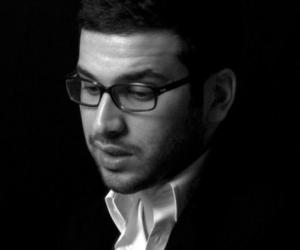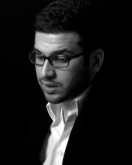The Sustainable City, keynote address by Antanas Mockus
The keynote speaker for The Sustainable City was introduced to us as a man that used less than $1 000 for his mayoral campaign and no advertisements. As part of his time as mayor of Bogota, Columbia, Antanas Mockus filmed himself showering during the Columbian water shortage, where he would turn off the water when soaping up. This is a man using creative strategies to solve unsustainable issues.
Mockus started out with quotes from Vikto Schlovsky, “things are continuously getting grey, art gives back colours, you rediscover the old things under a new light, or you discover the new thing under a old light.”
Mockus is a mayor that uses the power of art to change his city, what he terms “sub-art”. Mockus once cut a heart-shaped hole in his bullet proof jacket to show his trust in the people. His projects, some seeming to be a joke, were effective in lowering the crime rate. To make people aware of “legal sanction” he had mimes dress up as police officers, saying nothing, but reminding people of regulation. This was supporting his concept of “if you cannot change your hardware, change your software”.
Rewards for responsibility
Taxi drivers in Bogota are notorious for taking their customers to the wrong places and giving back short change when they drop them off. To solve this, Mockus started the “Zebra-Knights” programme, giving a sticker for a taxi to whichever driver would obey these simple steps of greeting people, taking people where they need to go and giving people back all their change. Mockus started with 120 taxis, the next week it was more than 1 000 and at the end of his term, 35 000. These taxi drivers where following natural social “regulatory mechanisms”, as Mockus defines them to be. “Fear of legal sanction, fear of guilt, and fear of social rejection.” To respond to fears of guilt, the government painted bright yellow stars on the streets where people where killed by traffic accidents.
Mockus closed by stating that “sub-art equals learning from arts to change the city... switching towards art instead of switching towards violence, art cannot take the place of instrumental violence but it can reframe its meaning”. Mockus was well-received by the audience, earning a standing ovation for his work.
The Sustainable City. A mayoral panel discussion with David Byrne, Sergio Fajardo, John Fetterman, Greg Nickels, Michael Nutter and Kurt Anderson
Lessons from termites
I sat in the back of the audience, for electricity reasons, in the sold out theatre for this mayoral panel on “The Sustainable City”. We were shown a video of people from around the world biking. Different years, different colours, different languages; the people all share the bike as their mode for transportation. David Byrne, musician, artist, producer, activist and columnist gave us a short introduction of the sustainable city. He began by showing a city built by termites, these tall, thin mounds that must maintain a constant specific temperature in order to them to continue to stand. He then compared this to drawings by Hugh Farris, Frank Lloyd Wright, Corbusier and Buckminster Fuller. We could see the similarities in the drawings and the termite mounds, where cities today are endless mounds of high density.
Byrne stated: “The visions of Corbusier and others is the put the citizens against the government.” He ended by giving examples of interactions of the city; people holding signs, signs telling people what to do, dense bike parking in China and children in NYC playing a song on the street. Each one of these is a specific act between city and its people, but is it sustainable?
City dreams
Sergio Fajardo, mayor of Medellin, Columbia, put his city in context to see why things have happenef. “This is Medellin”, he started, “the most beautiful city in the world”. Medellin used to be the murder capital of the world. “We had a dream, we knew what we wanted and a group of people who decided they were going to change a city.”
There were three problems to solve: inequality, violence and corruption. Fajardo’s lecture contained images of hand sketches. It first showed us two trees, inequality being one tree and violence the other, while corruption was the grass that acts as the nutrient feeding the two trees. “We need to pull out the trees, 30 years of roots.” He showed more hand drawings of doors that surround the illegal doors. “We need to close the doors of how and why and in order to solve the problem we need to open new doors.”
One of his biggest projects to solve these issues was in one of the poorest and most violent neighborhoods in Medellin, resting on top of a mountain. The government purchased all the homes, demolished them and built a new public space, housing a new library and public space regenerating the space. Farjardo quickly ended by saying: “Nothing has happened there, no violence or corruption.” This was the example for how design can change a city from one of the most dangerous to safest cities in Columbia.
Welcome signs
John Fetterman, two-time mayor of Braddock, Pennsylvania and, the youngest person on the panel started his talk with the quote: “Reinvention is the only option.” Just to give a little background, Braddock consists of a population of less than 2 200 people. It is where Andrew Carnegie got his start, the median home price is $4 800 and the average household income is $17 518. “In 1929 there were 30 tailors, 30 drug stores, etc... in 2010 all the businesses were closed.”
Fetterman asked himself as entering mayor “what can be done with a town that lost 90% of everything?” Braddock hired 10 000 kids to fix up a church into a community centre, abandoned houses into shelter for abandoned children, new playgrounds on blank lots, a two acre urban farm, a new “Welcome to Braddock” sign, and a new art centre. These were just half of the examples he showed us. With these designed interventions in the city Braddock, crime has dropped by 50% in three years. Levi’s, the jean company, has teamed up with Fetterman for a new campaign to raise money for the reinvention of Braddock.
Love makes the city go around
Greg Nickels, recent mayor of Seattle, Washington, started out by simple stating “you have to love that place you are from”. He is from Seattle, what he claims to be a very creative place. “Bill Boeing coming to Seattle to build airplanes, Bill Gates for software and Starbucks figured out how to charge $3 for coffee and we stand in line for their creativity”, he jokingly said.
Kyoto Protocol, customised
In the winter of 2004 and 2005, the ski season was cancelled and for Nickels as mayor this presented a challenge as they use the melted snow for water and energy. “If there is no snow, there is no water or energy.” They were at risk, so he acted. This happened at the same time that the Kyoto Protocol was being signed everywhere but in the US. Nickels decided he would implement the protocol in Seattle. He challenged mayors across the nation, and in the end 1 050 mayors signed the pledge before he left office. The city government reduced their emissions by 60% without breaking the bank.
With this new plan for efficiency, they engaged the community door to door, explaining ways to save at low costs, to make a difference. “The solution needs to happen in cities not on the outskirts... we need to make our cities a place where people want to work, live and play.” Seattle decided, as a community, that they wanted it to be a 24/7 city and that density would be a way to achieve this. Nickels greatest achievement was overturning the law that prevented density, changed parking regulations for developers to increase public transportation, resulting in the success of Seattle today.
Not just for tree-huggers
Michael Nutter, mayor of Philadelphia, started by stating that “sustainability is not just about tree-huggers, it is about putting people to work, the new economy and rebuilding the community”. Nutter’s first duty was to change the 40-year old zoning code of Philadelphia, requiring a minimum of the USGBC’s LEED silver certification on all buildings. As a part of his plan, his city received a $129-million grant for his “15-point plan”. In 2010, Philadelphia was awarded the 2010 Sustainable Community Award. He ended by stating that “this is an exciting time in the field of public service... this is the time of innovation, to rethink and to compete”.












